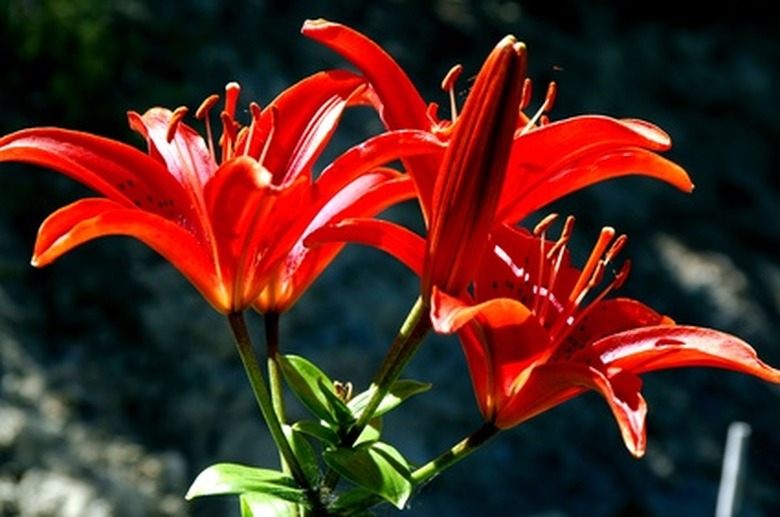Care Of Potted Asiatic Lily
Things Needed
- 4- to 6-inch-diameter container
- Pea gravel (optional)
- Garden soil
- Compost
- Pruning shears
Asiatic lilies are the easiest lilies to grow in a garden or a container because the bulbs tend to multiply quickly and the plant does not need to be stalked to stand straight up. The lilies grow from 1 to 6 feet tall with red, orange, yellow, pink or white flowers. Asiatic lilies do not have a fragrance; they flower in late spring to early summer when planted in a pot or in a garden.
Step 1
Use a container that is at least 6 inches in diameter and at least 6 inches deep for one bulb. The container should have drainage holes on the side at the bottom; for containers with drainage holes on the bottom, use 2 inches of pea gravel on the bottom of the container.
Step 2
Create a medium of one part garden soil and one part compost. Mix the soil and compost together and place it in the container. When using compost, chemical fertilizer not is needed for the growing season. Each season in the spring, add more compost to the top of the soil.
- Asiatic lilies are the easiest lilies to grow in a garden or a container because the bulbs tend to multiply quickly and the plant does not need to be stalked to stand straight up.
- Asiatic lilies do not have a fragrance; they flower in late spring to early summer when planted in a pot or in a garden.
Step 3
Plant the Asiatic bulb three times as deep as the size of the bulb in spring. For instance, if the bulb is 1 inch long, plant it down 3 inches deep in the soil. Plant the bulb with the tip of the bulb upwards. Water thoroughly.
Step 4
Place the lily in a window where it will receive at least six hours of direct sunlight each day.
Step 5
Water the potted lily once a week or when the soil is damp. Never allow the soil to dry out. As the stems start growing, the lily will use more water, so check the soil every other day and add water as needed.
- Plant the Asiatic bulb three times as deep as the size of the bulb in spring.
- As the stems start growing, the lily will use more water, so check the soil every other day and add water as needed.
Step 6
Keep the room temperature between 60 to 75 degrees Fahrenheit during the day and between 50 and 55 degrees F. during the night.
Step 7
Use the pruning shears to cut down the foliage when the flowers are done. Cut the stems down to 2 inches above the soil. Remove the container from the sunny window. Place the container in a room with light and temperatures between 50 and 55 degrees F. Bring the pot out in spring and place in a sunny window.
